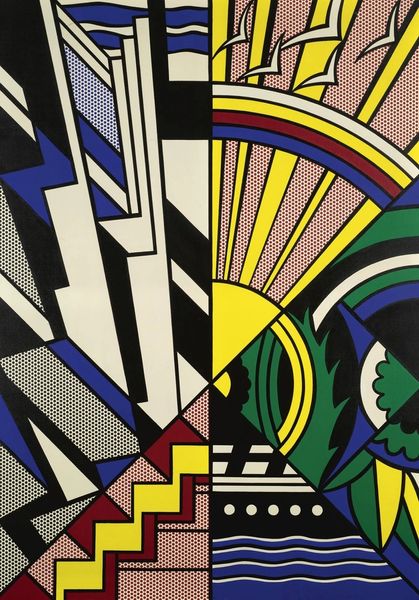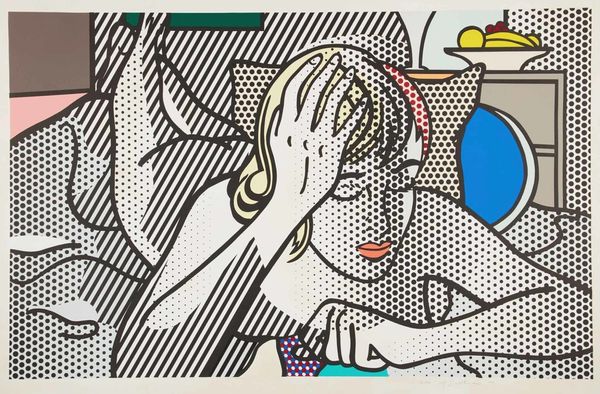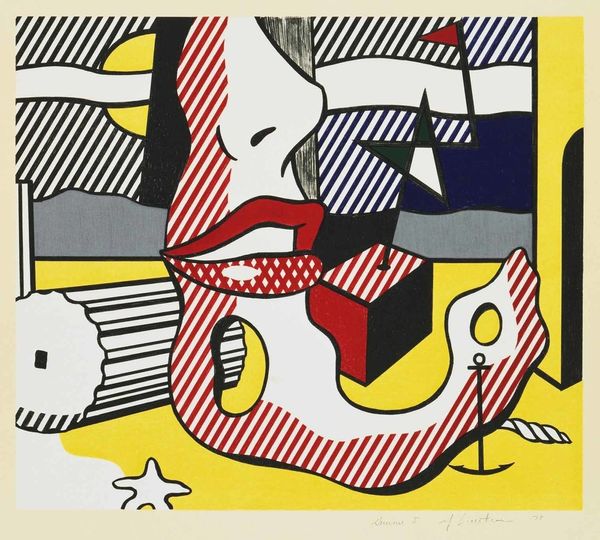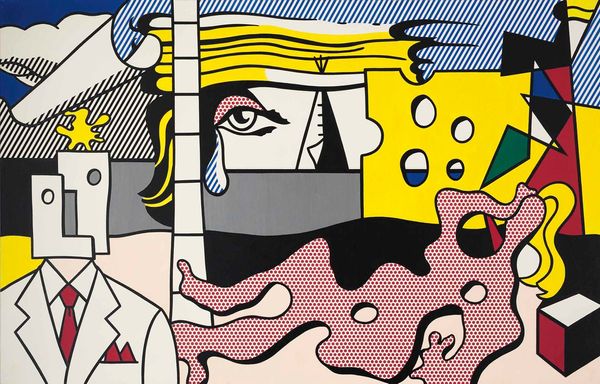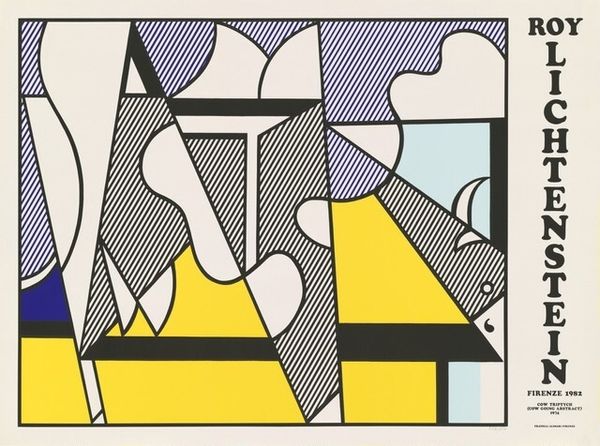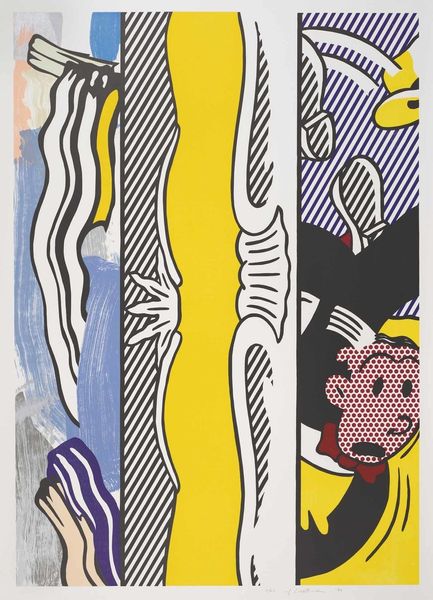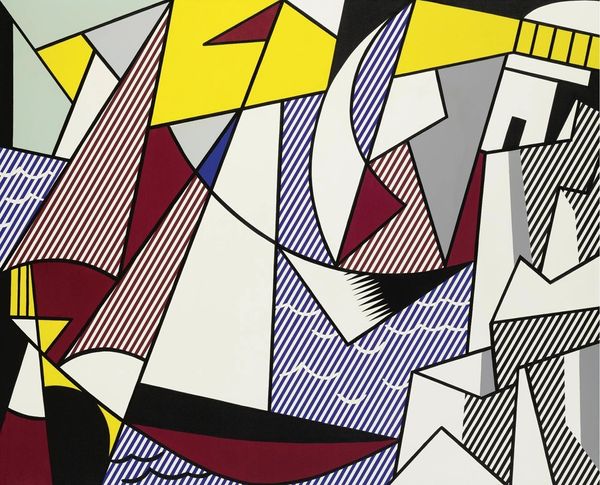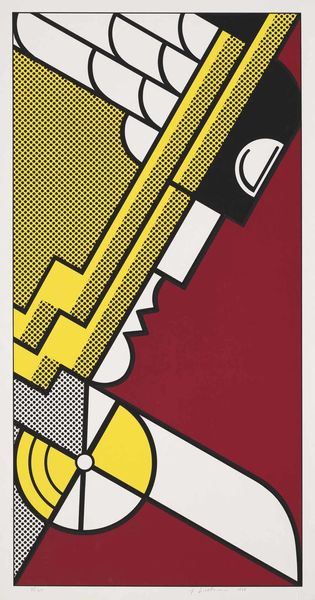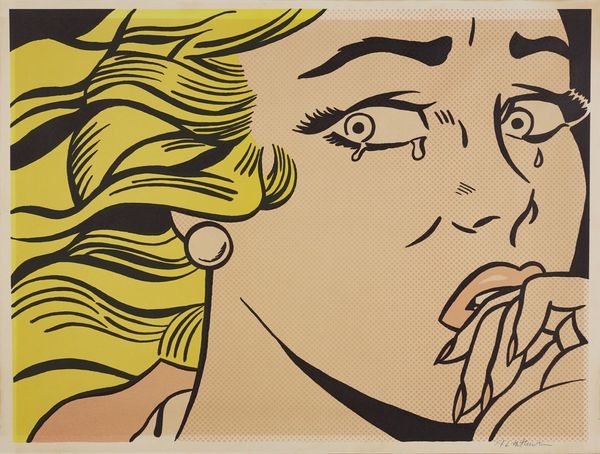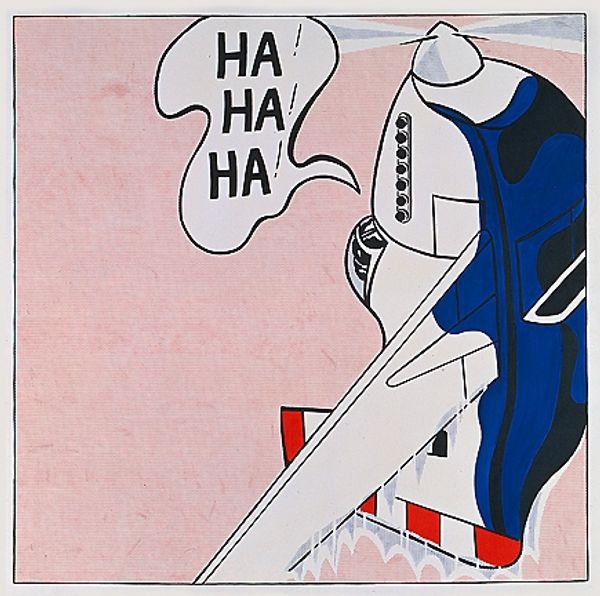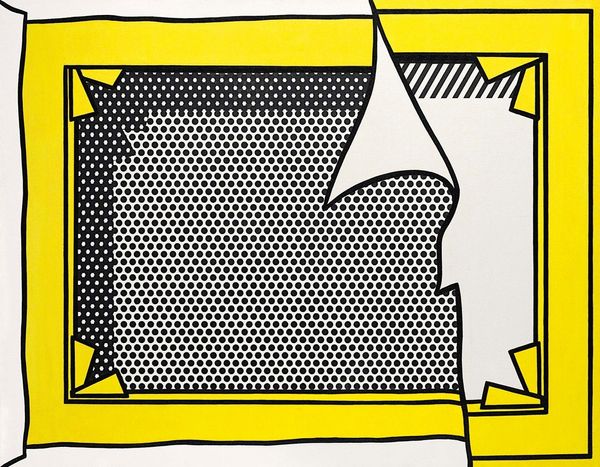
Copyright: Modern Artists: Artvee
Editor: So, this is Roy Lichtenstein's "Reflections; Mystical Painting" from 1989, done with acrylic paint. The composition is a little chaotic, and it looks like fragments of different images mashed together in that unmistakable comic book style. What's your interpretation of this mishmash? Art Historian: Well, first off, great observation about the fragmentation. Lichtenstein often plays with appropriating and recontextualizing imagery. Here, he seems to be riffing on art history itself, a common practice of Postmodernism in the 80's and 90's. Think about the rising art market at that time. How does the subject matter interact with the geometric and fragmented abstraction, and does the painting reflect on the themes in relation to artistic commodification? Editor: I never thought about that before! He's got that screaming face reminiscent of Munch, an ancient pyramid… are they supposed to be different iconic historical references of the canon of art that he's breaking apart? Art Historian: Precisely! Lichtenstein puts "high" and "low" art into the same plane. This brings up interesting questions: who gets to define what "art" is, and what makes an image valuable or meaningful? Considering its date, what would you suggest that Lichtenstein tried to tell about artistic values that reflect broader social trends in the artworld itself at that moment? Editor: I guess I assumed Pop Art was more straightforward, less about, well, art history. The pastiche now adds a meta-commentary about art culture. So maybe his painting acts as commentary about institutional gatekeeping around what the elites think should be displayed in Museums versus just popular comics? Art Historian: Exactly. By mimicking commercial printing techniques and juxtaposing them with fine art references, he challenged the established hierarchy and democratized art for everyone. We must see them together. Any additional perspectives based on that initial idea? Editor: So, instead of just seeing pop art with everyday subjects I should understand that it is heavily involved with both cultural context and power. I get it. Thanks for pointing me towards the socio-historical background on this. Art Historian: My pleasure. By engaging with that background, you are more able to draw richer and insightful interpretations of his, and other, works.
Comments
No comments
Be the first to comment and join the conversation on the ultimate creative platform.
